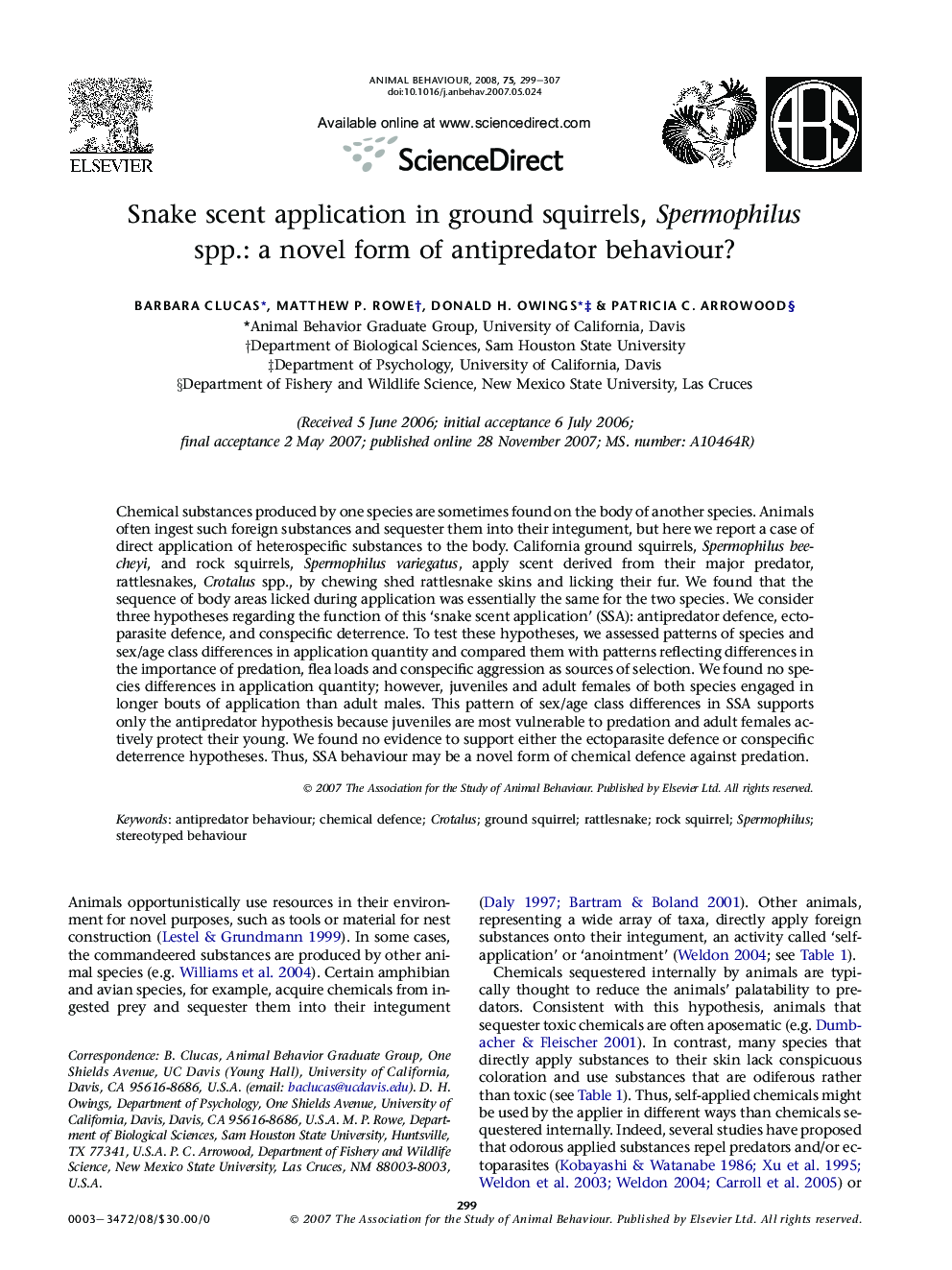| Article ID | Journal | Published Year | Pages | File Type |
|---|---|---|---|---|
| 2418979 | Animal Behaviour | 2008 | 9 Pages |
Chemical substances produced by one species are sometimes found on the body of another species. Animals often ingest such foreign substances and sequester them into their integument, but here we report a case of direct application of heterospecific substances to the body. California ground squirrels, Spermophilus beecheyi, and rock squirrels, Spermophilus variegatus, apply scent derived from their major predator, rattlesnakes, Crotalus spp., by chewing shed rattlesnake skins and licking their fur. We found that the sequence of body areas licked during application was essentially the same for the two species. We consider three hypotheses regarding the function of this ‘snake scent application’ (SSA): antipredator defence, ectoparasite defence, and conspecific deterrence. To test these hypotheses, we assessed patterns of species and sex/age class differences in application quantity and compared them with patterns reflecting differences in the importance of predation, flea loads and conspecific aggression as sources of selection. We found no species differences in application quantity; however, juveniles and adult females of both species engaged in longer bouts of application than adult males. This pattern of sex/age class differences in SSA supports only the antipredator hypothesis because juveniles are most vulnerable to predation and adult females actively protect their young. We found no evidence to support either the ectoparasite defence or conspecific deterrence hypotheses. Thus, SSA behaviour may be a novel form of chemical defence against predation.
